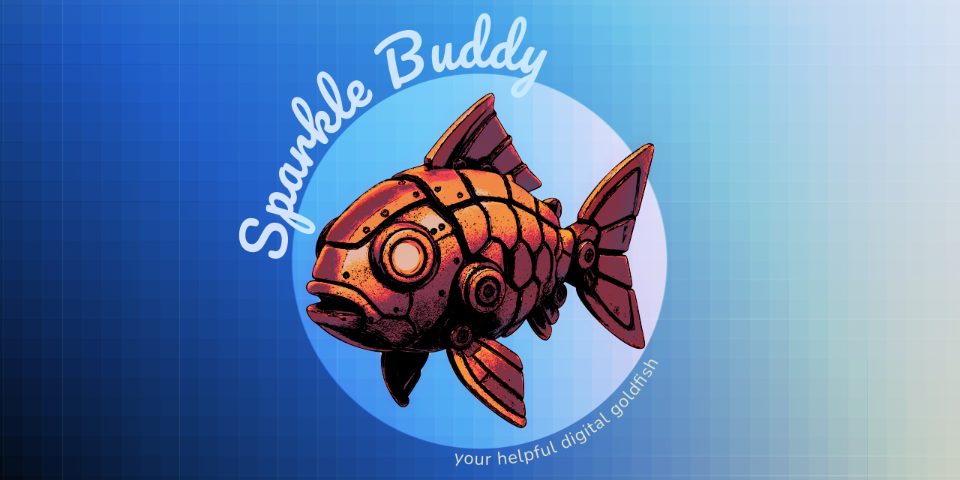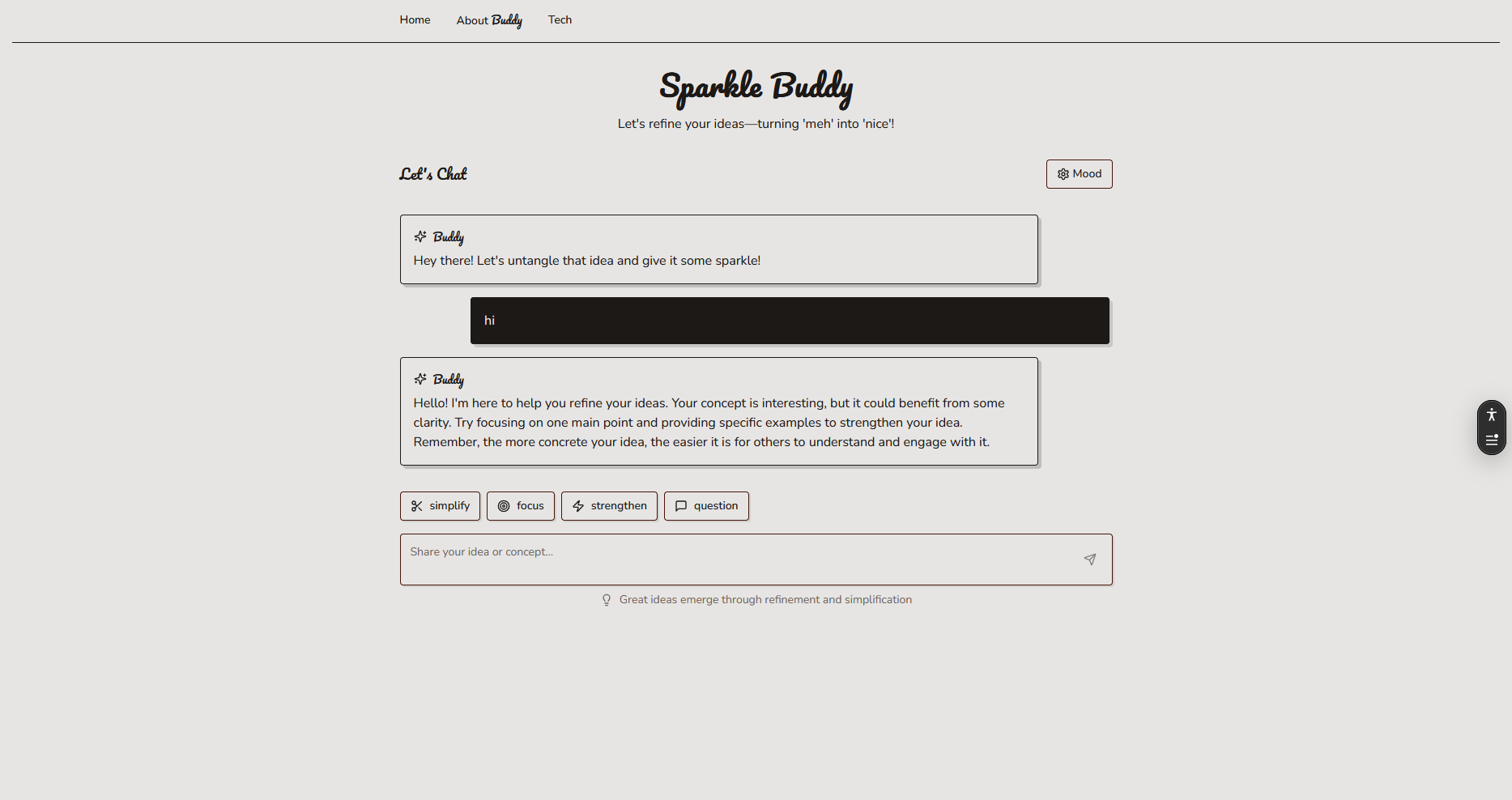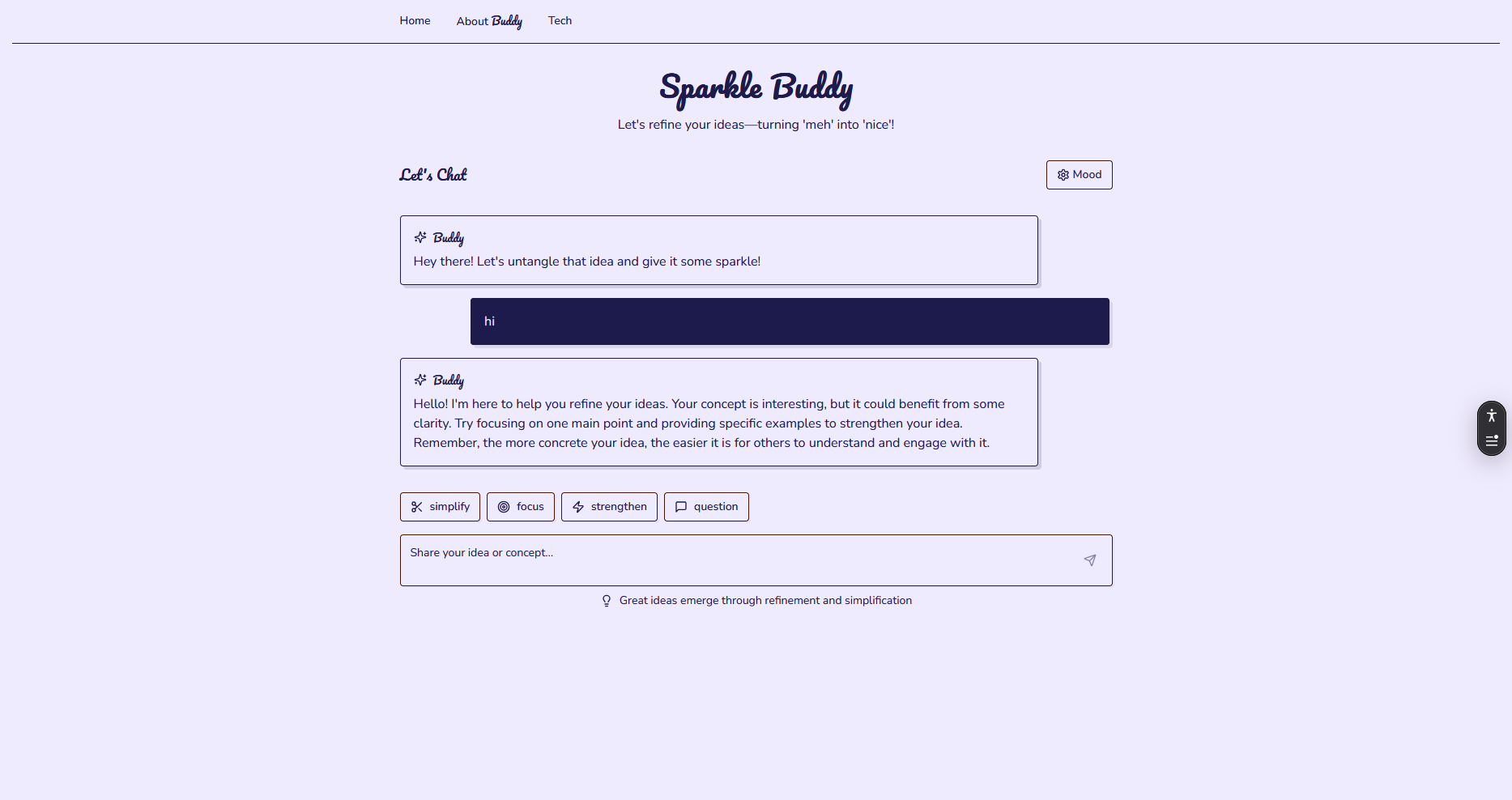
Sparkle Buddy – Your Helpful Digital Goldfish
Looking back 3–4 years, I was the ultra-skeptical type—almost hating AI. Why? Because, let’s face it, AI back then was mostly lame. It had potential, sure, but most implementations were just flashy chatbots that promised the world and delivered a shrug. All style, no substance. If the tech didn’t actually serve human needs, it was just digital clutter.
Then, over the past few years, AI started to make actual sense. It began solving real problems instead of creating new ones. And that’s when I realized: AI could be molded into something truly personal. A digital mentor that’s a bit delusional, a bit trippy, but still capable of cutting down hours of pointless Googling.
Let’s be honest—most of us are a little chaotic. We’re the generation that used to meticulously curate our iPod libraries, only to now quietly diagnose ourselves with a dash of ADHD while juggling six different apps and three half-finished spreadsheets. Every “lazy” colleague who calls you a perfectionist is just low-key annoyed they can’t find their files. Because when it comes to systems, clarity is everything. And let’s face it: humans aren’t naturally great at keeping things clean. That’s where AI comes in. It’s better at untangling digital nonsense than any seasoned Googler.
So, What’s Sparkle Buddy All About?
Sparkle Buddy is my little AI experiment — a chatbot with the memory span of a goldfish (yes, it forgets what you told it), where you can adjust the response length, tone, and even its look. From a pure tech perspective, it’s not revolutionary: just a free API hooked up to another free API, deployed via Vercel, with a custom frontend.
So why create yet another chatbot? Aren’t there already a thousand of them?
Yes — but the point wasn’t to build a better one. Sparkle Buddy was made to be disposable, experimental, and low-stakes. I wanted to make something that was personal-use only — something that didn’t drown me in content, didn’t try to outsmart me, didn’t come with hidden agendas. Just a helper. A nudge. A friendly prompt machine that could vibe with my mood and not get in the way.
This is, in a way, my digital rebellion against polished, characterless AI tools. While AI is clearly part of our future (and also our curse), many use it to strip away creativity, weirdness, and soul from the digital space. So I thought: I have the time, the tools, and my old friend ChatGPT — why not try building something that feels like a warm, weird little sidekick?
Themes, Tones & Visuals
Sparkle Buddy comes with three themes:
Default (Soft Orange) – warm and chill.

Pebble – a moody gray-stone palette.

Purple – soft purples and indigos, for those girlboss-on-a-journey vibes.

I’m usually a dark mode person, but playing with palettes outside my comfort zone made the project more fun. I wanted the interface to feel like a digital capybara—gentle, strange, and somehow reassuring. Tech doesn’t have to feel cold to feel smart.
How It Was Made
Everything started with a question: What could I build using only free tools and AI assistance?
I used ChatGPT to help me brainstorm possible APIs, weigh pros and cons, and sketch out use cases. Vercel seemed like an interesting tool to try for deployment — so I gave it a go.
Sounds simple, but anyone who’s ever had to deal with screen breakpoints, device rendering, or weird CSS quirks knows it’s no small feat.
So yes: I used AI to ask AI to build an AI, which runs via AI. Naturally.
The Good, the Bad, and the “Wait, Why Did That Break?”
The biggest win? Sparkle Buddy gave me a crash course in applying different frameworks and building something functional from scratch. I got to use what I know and refresh what I’d forgotten. It made abstract concepts concrete.
The catch? I don’t always fully understand why things work — or break. I’m cautious about what’s sensitive and what not to disclose, but like many curious builders, I rely on AI recommendations. That means if someone feeds the model bad data, me and my fellow tinkerers are… well, not in the best spot.
The ugly truth? I can design and style with the joy of a kid in a candy store — but when backend stuff breaks, I’m at the mercy of my AI overlords. And while AI is a lifesaver, it hallucinates a lot. Sometimes it’s just faster to do things manually.
Still, this kind of project is exactly the kind of mess I celebrate. Not a polished portfolio piece, but a living experiment. Something that teaches by doing, failing, retrying, and rethinking—again and again.
Under the Hood
Sparkle Buddy uses:
- Next.js – for server-side rendering and API routes
- React – to build the interactive UI
- Tailwind CSS – for styling
- Hugging Face Inference API – to power the chatbot’s smarts
This project lives happily on the “half-done but useful” shelf of Media_Clutter.
It’s not trying to change the world. Just make it a little weirder, one sparkly goldfish at a time.